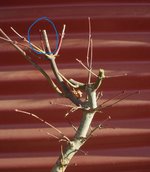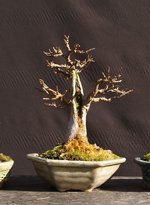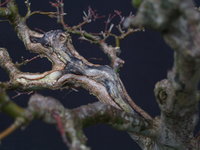Dieback seems to cover a whole raft of things. Some are not so good and may be preventable, others are perfectly normal so nothing to worry about.
Many trees can only grow from nodes where buds are present. If we prune between nodes the remainder of the stem above the last bud will die back. This rarely causes any problem as the dieback stops at the buds below the pruning site. Unless you trim very, very carefully right at the buds you will see some dieback of this sort after you trim your trees. Pruning close above a node or bud will minimize this minor die back but except for looking untidy this does not seem to cause any real problems.


More severe trunk chops can cause more severe die back. This usually occurs where there was a strong branch above the chop site. When it is gone there's no more sap flow from the roots to the branch and we can experience part of the trunk die off. To minimize chances of severe die back make progressive reductions to allow time for the tree to change sap paths before making the final chop. Even if you do experience extensive die back like this work with it and hollow out the trunk. Sometimes the results are better than before.

Large pruning cuts can sometimes have limited die back, usually just below the cut. This often changes the shape of the original cut from roundish to an inverted teardrop shape . If this occurs simply recut or carve out the dead area. The pointed scar actually seems to heal better than a rounder shape anyway.
This cut was originally roundish but a small area below the cut dies back to give this classic inverted teardrop scar. You can see it is now healing well.

Occasionally other factors will cause some parts of a tree to die back. Physical injury, drought, lack of light, cold, etc can cause some parts to die. The picture below shows a dead section on a branch after. This almost certainly from sunburn after the tree was defoliated in summer.






